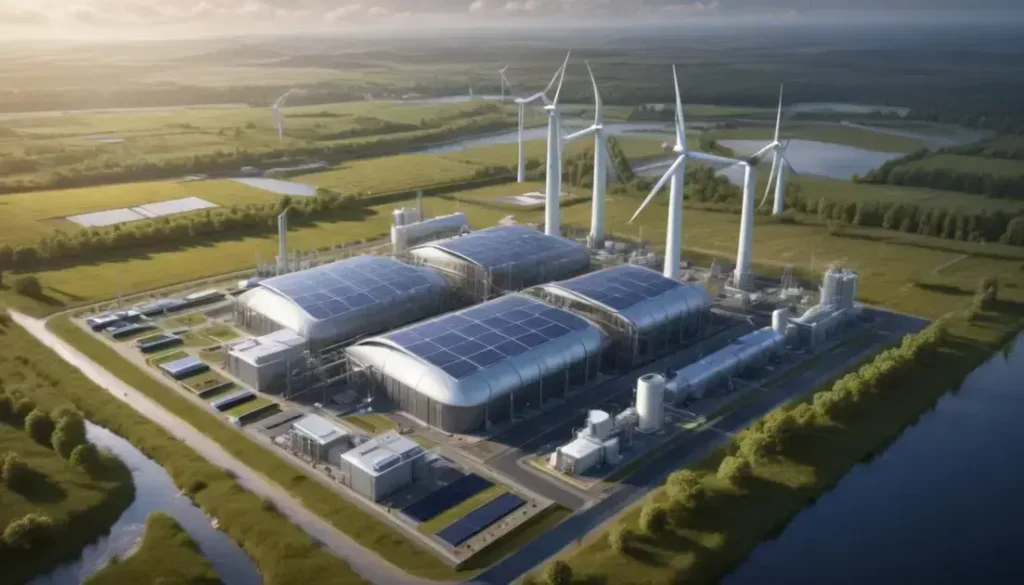The onshore wind strategy enhances renewable energy development while providing significant economic benefits to communities, including job creation and financial incentives for local residents.
The new onshore wind strategy in the UK represents a significant shift toward sustainable energy, and it’s crucial to understand its implications for Canadian businesses.
Introduction to the Onshore Wind Strategy
The UK government’s new onshore wind strategy signals a major commitment to renewable energy sources. This strategy aims to increase the number of onshore wind farms while ensuring the benefits are shared with local communities. Incentives for development will not only create sustainable jobs but also encourage investment in green technologies.
With the emphasis on reducing carbon footprints, the strategy addresses the need for a more resilient energy system. It recognizes the vital role of onshore wind in achieving net-zero emissions targets. Furthermore, the government is expected to streamline planning processes, making it easier for new projects to move forward.
Community engagement is at the forefront of this strategy. Local residents will be provided with opportunities to benefit financially from wind projects, creating a sense of ownership and ensuring project sustainability. The government will promote best practices to ensure that the voice of the community is heard in decision-making processes.
In summary, the onshore wind strategy aims to enhance energy security while promoting economic growth. By leveraging renewable energy, the UK sets a powerful example for other nations, including Canada, on how to transition towards a greener future.
Key Strategic Actions for Development
The onshore wind strategy outlines several key strategic actions aimed at facilitating the growth of renewable energy projects. First, the government plans to simplify the planning processes, ensuring that new developments can progress more efficiently. This includes revised guidelines to help investors navigate regulations effectively.
Additionally, the strategy emphasizes collaboration with local authorities and communities. By fostering partnerships, the government seeks to enhance public support for wind projects. This approach aims to address community concerns and highlight the economic benefits that onshore wind can bring.
Moreover, investment in research and innovation is critical. Supporting new technologies can lead to more effective energy production methods and reduced costs. The Government will allocate funding to projects that explore innovative ways to increase efficiency in wind energy generation.
Finally, an integrated approach to community benefits is essential. Establishing financial incentives for local residents who host wind farms will help create a win-win situation. This balance of interests not only fosters community goodwill but also ensures the sustainability and acceptance of onshore wind initiatives.
Community Benefits and Economic Impact
The onshore wind strategy not only addresses energy needs but also highlights significant community benefits that can result from local wind projects. By investing in these initiatives, communities can expect an influx of economic opportunities and job creation. Employment in renewable energy sectors often provides skilled jobs, which are crucial for long-term economic growth.
In order to foster positive relationships, the strategy emphasizes transparency and communication between developers and the community. Local residents will benefit from initiatives such as financial incentives tied to the projects. This could include direct payments or investment in local infrastructure, enhancing community services and engagement.
Moreover, the economic impact goes beyond immediate financial benefits. Onshore wind projects can stimulate local businesses by increasing demand for services and goods, from construction companies to maintenance and operations firms. This ripple effect is essential to community development and sustainability.
Overall, incorporating community feedback into the planning stages ensures that projects align with local interests. Engaging residents in the decision-making process can lead to stronger support and acceptance of wind energy solutions, positioning communities for a more sustainable future.
In Summary: The Future of Onshore Wind Energy
The onshore wind strategy represents a significant step toward a sustainable future. By emphasizing local community involvement and economic growth, it not only meets energy demands but also enhances the quality of life for residents.
Through streamlined processes and strong partnerships, communities can benefit from the economic opportunities presented by wind projects. From job creation to improved local services, the positive impacts are clear.
As we look ahead, embracing renewable energy solutions like onshore wind is essential. This strategy not only addresses environmental goals but also creates a more resilient and engaged community. It is a win-win situation, paving the way for a brighter, greener future.
Frequently Asked Questions
What are the main benefits of onshore wind energy for communities?
Onshore wind energy provides economic opportunities, job creation, and financial incentives for local residents, enhancing overall community welfare.
How does the onshore wind strategy impact local economies?
The strategy stimulates local economies by increasing demand for services and goods, which benefits local businesses and creates employment.
What role do communities play in the development of wind projects?
Communities are encouraged to participate in decision-making processes, ensuring that local concerns and benefits are addressed during project planning.
How does the government support the development of onshore wind farms?
The government simplifies planning processes and fosters partnerships between developers and local authorities to facilitate project development.
What are financial incentives for residents hosting wind farms?
Financial incentives can include direct payments or investments in local infrastructure, providing tangible benefits to the community hosting the wind projects.
Why is public engagement important for onshore wind projects?
Public engagement builds trust and support for wind projects, leading to more successful and sustainable implementations that align with community interests.


